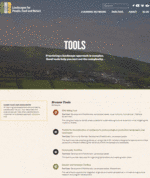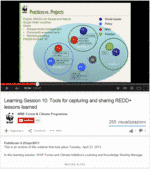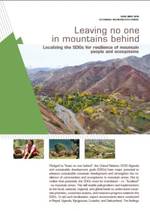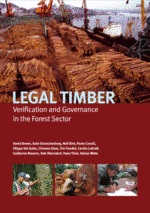Tools
A tool is a resource that supports and guides the implementation of SFM. This section includes all the tools available in the SFM Toolbox, which can be in form of publications, e-learning videos, software etc.
You can browse the Tools through keywords in the free search box or you can narrow the search using the filters on the right side of the page.
The present manual has been prepared by an interdisciplinary group of experts with land use planning experiences in Africa, Asia, Europe and Latin America. Many of them had already been involved in the preparation of the first guide, others have newly joined the land use planning discussion coming from new...
The present book has been prepared by an interdisciplinary group of experts with land use planning experiences in Africa, Asia, Europe and Latin America. Many of them had already been involved in the preparation of the first guide, others have newly joined the land use planning discussion coming from new...
Landscapes for people, food and nature is a learning network to share experiences on landscape management.
This website has a section specifically dedicated to tools for landscape management. They can be provided by practitioners simply uploading them on the website. Resources and experiences from others can help other practitioners worldwide...
This is a webinair that took place on September 2013.
In this learning session, Dr. Ian Thompson, a research scientist with the Canadian Forest Service, discusses his recent co-authored publication, An Operational Framework for Defining and Monitoring Forest Degradation. The work was conducted with an international group as requested by the...
REDD+ has the potential to increase international support for the strengthening of community land and resource rights and forest stewardship activities of indigenous peoples and local communities. Yet, the REDD+ mechanism has also sparked concern about potential adverse impacts on indigenous and community rights and livelihoods, such as negative impacts...
Minnie Degawan, WWF Forest and Climate Initiative Adviser on Social Safeguards, discusses the importance of social safeguards in making REDD+ work and how to move from planning for safeguards to actual implementation. She also provides an overview of how to know if social safeguards are being applied effectively, and walks...
This webinar took place on April, 2013.
In this learning session, WWF Forest and Climate Initiative's Learning and Knowledge Sharing Manager Maria Jose Pacha guides us through a number of new tools and resources available for REDD+ practitioners seeking to identify, capture and share lessons learned that promote successful REDD+ initiatives....
Pledged to “leave no one behind”, the United Nations 2030 Agenda and sustainable development goals (SDGs) have major potential to advance sustainable mountain development and strengthen the resilience of communities and ecosystems in mountain areas.
This book investigates a topical issue in international forest policy development: how to verify the legality of timber sold on regional and international markets in ways that will satisfy both the interests of producer states and the demands of consumers. This seemingly straightforward and technical matter is in fact complex...
This study asked experts from around the world to identify the most significant threat to mangroves. Figure shows their responses. The main threat identified was agriculture, representing both land conversion for agriculture and agricultural pollution. Aquaculture remains a primary threat as perceived by experts. However, threats such as disruption of...










